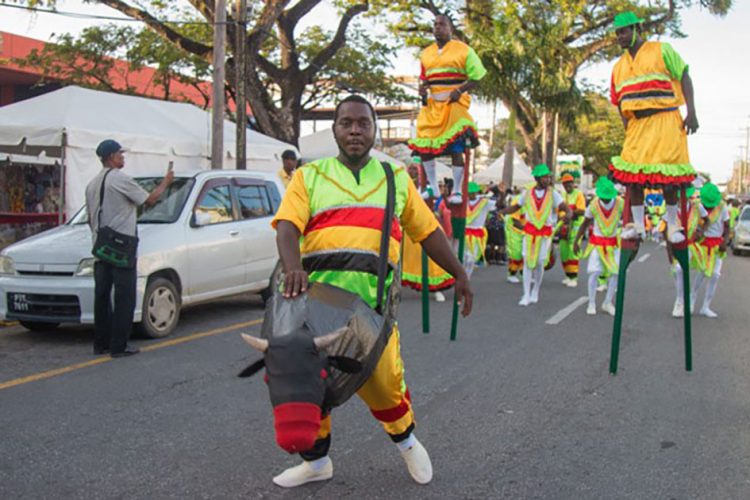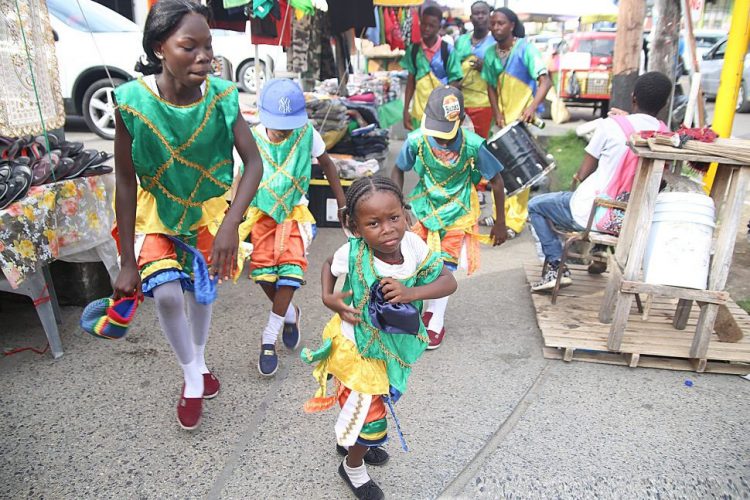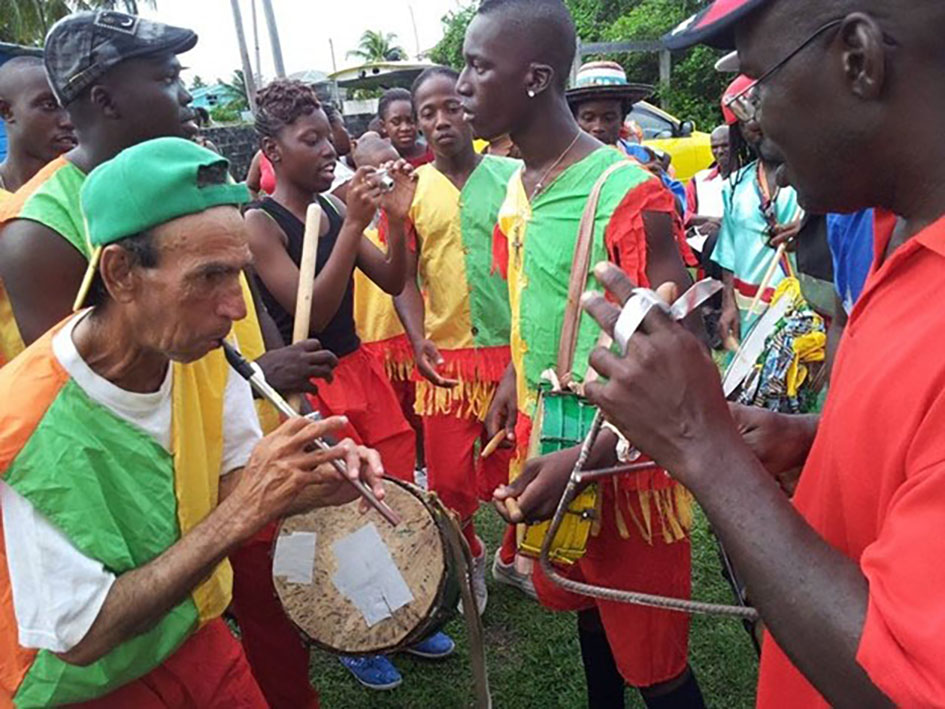At the end 2023, the Guyanese cultural community mourned the loss of Rudolph Vivieros, widely known as “Potagee”, whose passing, according to Stabroek News’ Arts on Sunday columnist Al Creighton, mirrors the dimming of the lights on the age-old tradition of masquerade.
In his article titled “Drastic measures must be taken to arrest the decline of masquerade,” (SN 01/07/24), Creighton noted that as society becomes increasingly focused on technology, the recognition and remembrance of such traditions as masquerade fade away.
Potagee, a revered figure synonymous with masquerade in Guyana, played the flute, also known as the fife, in masquerade bands. His skill and talent represented the fading corps of masquerade practitioners who kept the tradition alive when it was at its peak. The tradition holds little significance in contemporary society.


Bernadette Ramsingh, Potagee’s sister, revealed that her brother’s passion for flouncing in the masquerade band began when he was a young boy. And even after losing a leg in 2014, Potagee continued to participate in the Christmas masquerade band performances in a wheelchair.
Potagee hailed from Plaisance, East Coast Demerara, and dedicated most of his life, when he was not playing with the masquerade, to his father’s fishing trade. He played with the Golden Arrowhead Band, led by Lionel Blackett of the West Coast Demerara.
According to Creighton, throughout the contemporary period, there has been only one other flautist who matched Potagee’s standard and that is Jerome Cumberbatch popularly called “Three Feet” (due to his stature) who leads the Torch Masquerade Band in Linden.
According to Creighton, the rhythmic music of masquerade, features drums such as “the boom” and “the kittle” accompanied by a middle-sustaining drum. The flute or fife adds a unique folk wind instrument element to the music. The columnist recounted taking a tour around Georgetown and other outlying areas like Linden and Victoria during the Christmas season. During that time, he observed that the tradition no longer thrives on the streets. This is despite a few masquerade bands claiming that it is still alive and active.
Creighton stated that the bands that do exist are often seen as fragmented stragglers, unable to recreate the authentic masquerade experience. The absence of full bands and the lack of knowledge surrounding drumming, dancing, costume-making, and drama contribute to the decline of the tradition.
Back when full masquerade bands appeared during the Christmas season and Mashramani, they comprised skilled costumed flouncers, a Long Lady or Mother Sally who actually danced, a mad cow or two that sent children scattering in fear due to the wild antics, men on stilts, drummers, a flautist and a triangle player; some may have had more.
In those days, the bands would enter people’s yards and spend some time entertaining the delighted occupants. Both adults and children were eager to and permitted, at a price, to enter the large skirts of Mother Sally and have a fun-filled moment dancing to the rhythm of the drums and flute that accompanied the band.
Today, the bands that are seen around Guyana merely comprise a few scattered flouncers and a drummer or two. Often they are seen as a menace to those caught up in traffic as they are not entertaining but mere obstructions seeking monetary donations.
Conrad Semple, a former resident of Mahaicony, East Coast Demerara, recounted an experience in 1992 when he resided in the village. He had completed his stint at university and was at home when he noticed that the masquerade culture was dwindling. As such, he took it upon himself to revive it in the village by creating a band.
Semple said he created a Mother Sally and a mad cow from observing others in the trade and gathered together village musicians. That Christmas was quite a memorable one, he recalled, as the band was an immediate hit in the neighbourhood, to the extent that he was able to loan out the costumes to others so that they too could spread some traditional joy in other villages.
To revive masquerade, Creighton posited that the National School of Dance, the National School of Drama, and experienced practitioners like Jerome Cumberbatch should be engaged to train and educate band members. Efforts were made by this newspaper to contact Director of the National School of Dance Linda Griffith, but calls and texts went unanswered. Griffith is also a choreographer who has worked with masquerade.
Administrator of the National School of Drama Margaret Lawrence and Andrea Mentore (Lecturer in Music) were also unavailable to answer questions. Both Griffith and Lawrence had been engaged by Creighton, and they had told him there are some seven masquerade bands in existence around Demerara.
Semple surmised that the tradition has dwindled because the older folks failed to teach the younger ones about it. He believes that the masquerade culture could be revived by raising awareness on its roots and history and through funding from organisations and the Culture Ministry.
Creighton, in his article, also made a call for the Department of Culture in the Ministry of Culture, Youth, and Sport to provide funding and assistance to support the revitalization of masquerade. However, when contacted, Director of Culture Timeka Boatswain declined to comment, stating that she was not authorised to speak on any matters. Boatswain said that Minister Charles Ramson was the spokesperson for the ministry. Calls to Ramson’s number went unanswered.






